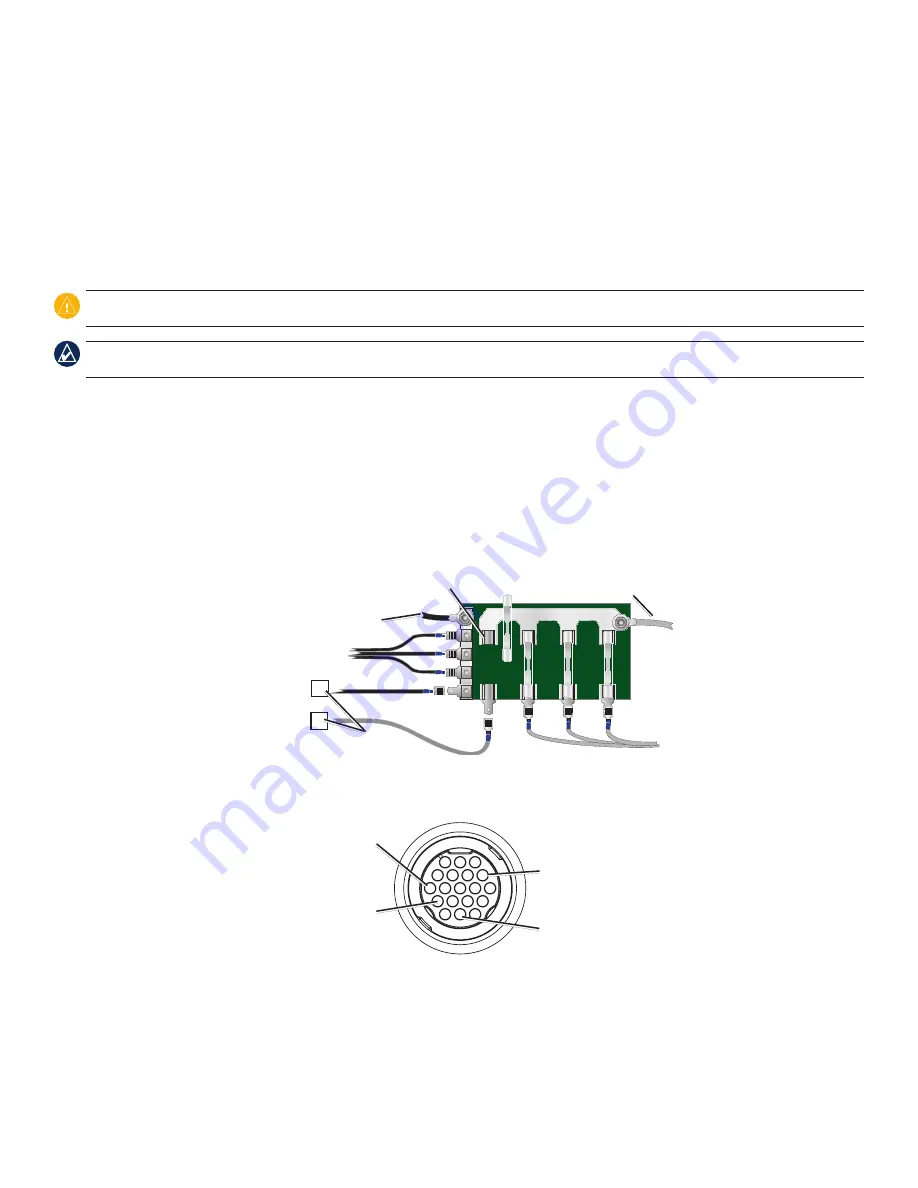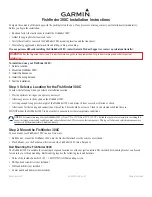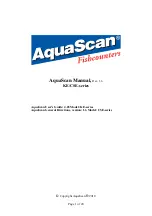
6
Fishfinder 300C Installation Instructions
Step 4: Install the Wiring Harness
The Fishfinder 300C comes with a cable assembly that connects it to power and to the transducer with one connection and provides interface
capabilities for connecting external devices.
The color code in the diagram on
indicates the appropriate harness connections. The replacement fuse is an AGC/3AG 3A fuse. If it is
necessary to extend the power wires, use 22 AWG wire. Do not cut the transducer cable. Cutting the transducer cable voids your warranty. If
your boat has an electrical system, you might be able to wire the Fishfinder 300C directly to an unused holder on your current fuse block. If you
are using the fuse block, remove the in-line fuse holder supplied with the Fishfinder 300C. You can also wire the Fishfinder 300C directly to the
battery.
CAUTION:
The Fishfinder 300C maximum input voltage is 33 Vdc. Do not exceed this voltage, because this can damage the Fishfinder 300C and void
the warranty.
NOTE:
During a typical installation, use only the red and black wires. The other wires do not have to be connected for normal operation of the
Fishfinder 300C. For information on connecting to a NMEA 0183-compatible device, see
To install the wiring harness:
1. Use a test light or voltmeter to determine the polarity of the voltage source.
2. Connect the red (+ or positive) wire to the positive voltage terminal. (If you use the fuse block on the boat, route the positive connection
through the fuse, as shown on the diagram.)
3. Connect the black (- or ground) wire to the negative voltage terminal.
4. Install or check the 3A fuse (on the fuse block or in the in-line holder).
5. Align the notches on the cable plug and on the back of the Fishfinder 300C. Insert the cable into the connector, and turn the locking ring
counter-clockwise until it stops.
—
+
To 10–38 volt boat supply
3A
+
Boat ground
3A fuse
To Fishfinder 300C
Fuse block
Pin 8 - ground (black)
Pin 18 - NMEA out (blue)
Pin 13 - dc positive (red)
Pin 7 - alarm (yellow)
Fishfinder 300C Power/Data
Cable Pin Assignment









